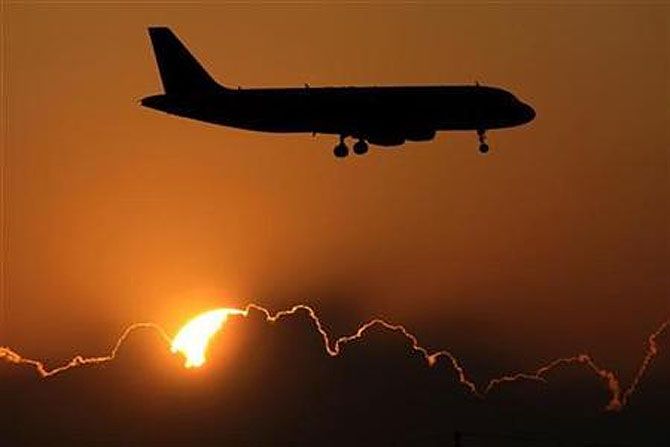The recent spate of technical glitches in aircraft has prompted the Directorate General of Civil Aviation (DGCA) to issue an order on July 18, making aircraft maintenance engineers (AMEs) with category B1/B2 licences the final authorities in certifying planes.

This has put the spotlight on the availability of such personnel.
According to the order, airlines were resorting to frequent one-off authorisation by the Category A certifying staff at transit stations, which is not in line with existing regulatory provisions.
This category of AME is permitted to maintain aircraft only within certain limits, unlike Category B licences, which are more given to specialised AMEs who deal with intricate components such as engines and wings.
Official numbers
This shortage is all the more surprising when one considers the official data on AMEs and AME schools.
According to the Directorate General of Civil Aviation’s (DGCA’s) website, there are 49 AME institutes in the country as of October 11, 2021.
However, according to a 2020 Lok Sabha reply, there were only 12 type-training (skilled-training) organisations in the country.
In the past 10 years, the DGCA has issued approximately 30,000 AME computer numbers (a unique number provided to every student who takes admission in the AME course), according to a 2022 RTI reply.
The industry employs just 5,900 people as maintenance and overhaul personnel, according to the data published by the ministry of civil aviation in 2021.
For comparison, as of March 31, 2022, the Singapore Airlines (SIA) Group had 176 passenger aircraft in its operating fleet.
The group’s engineering subsidiary, SIA Engineering Company (SIAEC), has over 4,000 technicians, of whom the largest group of staff (60 per cent) are technicians, followed by licensed aircraft engineers (20 per cent).
On the other hand, India’s largest airline group by market size, IndiGo, has 275 aircraft but only 2,222 maintenance and overhaul personnel, according to the 2021 annual report.
Air India group (Air India, Air India Express, and Alliance Air) has 167 aircraft and 5,038 (including AI Engineering Services' 4,449 technical staff) technicians and overhaul staff in 2021.
Of them, a majority work as trainees or junior associates. Only a few have an AME licence.
According to the Ministry of Civil Aviation’s annual report, of the 57,434 candidates who applied for the AME licence in 2019-20, only 0.8 per cent or 506 got it.
The department has stopped giving the number of candidates who applied for the AME licence after 2020.
From 2014 to 2022, the DGCA issued 7,232 AME licences.
Over a six-year period between 2014-15 and 2019-20 the airlines’ maintenance and overhaul workforce almost halved from 10,480 to 5,900, despite an increase in the number of aircraft from 410 to 710 in the corresponding period. (The decline in the workforce was due to the creation of the engineering subsidiary AISEL by Air India.)
Airlines reported 478 technical snags in the past year, from July 1, 2021, to June 31, 2022, the government informed Parliament recently.
On a Business Standard query on Category A, B1, B2 technicians employed with the airlines and in compliance with the July 18 order, Air India replied: “Air India has outsourced all its maintenance activities to its service provider AIESL.
"Air India has already written to AIESL to strictly follow the guidelines from DGCA.”
A spokesperson for SpiceJet said the airline has complied with the DGCA's order.
“AME recruitment is an ongoing process and is reviewed as per fleet size.
"The current salaries at SpiceJet are above the industry levels,” the spokesperson said.
AIESL, Vistara, and IndiGo did not respond to queries. Go First declined to comment.
Low wages
This large pool of potential recruits has suppressed wages in the industry, some AMEs told Business Standard.
They said more maintenance engineers get added to the system every year, even though the number of jobs has remained relatively stagnant.
Prashant Kumar, technician with AI Engineering Services Ltd (AIESL), India’s largest maintenance, repair and overhaul (MRO) with 4,449 technicians on its payrolls as on March 31, 2021, and which provides maintenance services to Air India, says he, along with 26 others, was terminated by his employers in March 2022, when he launched a protest demanding the implementation of fixed-term employment rules, enforcing career progress rules, and revision in salaries.
Kumar’s termination was revoked after a seven-day protest and his pay was hiked.
The company hiked salaries by Rs 6,000-8,000 for all staff, he said, though it has so far not met the other demands the workers had put forth.
“We are still waiting for the unmet demands,” says Kumar, who has six years of experience. His last drawn salary was Rs 26,400 per month.
This failure to provide sufficient jobs is also a reflection of the state of aircraft maintenance organisations (AMOs).
According to the DGCA, there are 123 approved domestic AMOs as of March 2, 2022.
While no up-to-date information is available of how many of these organisations are functional, according to a 2018 reply in the Rajya Sabha, there were then only 12 capable of carrying out overhauls of planes.
According to a Lok Sabha reply in 2019, for base MRO, only about 4 domestic AMOs of the 48 standalone ones approved by the DGCA have the capacity and requisite certifications to meet part of the base MRO needs of India’s aviation sector.
An estimated 85-90 per cent of the base MRO is supplied by overseas AMOs approved by the DGCA.
A former senior DGCA official suggests the regulator should reconsider the present system of airlines’ self-determination of the number of type-rated engineers required.
“The DGCA should issue guidelines on the positioning of properly trained manpower at every station and should conduct its periodic reviews,” he said, adding: “Airlines are using Category A technicians to cut corners as they cost less.”
Arun Kumar, director general, DGCA, highlighted the fact that the regulation had barred the use of Category A licence holders from certification of airlines and said: “To save cost airlines were using Category A technicians.
But now they have agreed to depute Category B1/B2 licence holders on all airports.
”On the question of implementation, he said, “We will conduct an inspection to check that.”
Kumar said there was no dearth of AMEs and AME schools. “We have issued enough licences.”
On tenterhooks
The attrition rate is very high in the industry.
Ranjit Chakraborty, All India Jet Airways Technicians Association president and former technician who lost his job when the airline shut operations in 2019, says: “People leave this field because there is no job security, career progress rules, and minimum wages.
"Only 10-20 per cent of total students who get an AME licence remain in this field.”
In 2017-18, the airline had 2,039 maintenance and overhaul personnel.
The volatility in the sector has also not helped. Between 2000 and 2022, over 17 airlines closed operations in the country.
Bhavya Velani, founder, Aviation A2Z, a website dedicated to supporting aviation professionals, says: “The unpredictable nature of the industry is the workers’ biggest worry.”
"Nobody knows which airline will shut down tomorrow because the majority of them are running in losses already.”
A roller coaster
Though the number of jobs in the sector is limited in India, the launch of new airlines has given hope to students and institutes.
“With Akasa starting and Jet restarting operations, the industry is reviving again,” says R K Mishra, senior instructor, JRN Institute of Aviation Technology, adding, “but when any airline goes under, the industry suffers like it did when Deccan and Kingfisher shut their operations a decade back.”
The AME course comprises two years of academic training, which covers 2,400 hours of theoretical learning, including 360 hours of practical.
Though the number of students enrolling in the AME course has increased over the years, there has also been a rise in fees.
A two-year course can cost Rs 6-9 lakh.
The rising cost makes it difficult for students to finance their education and compels them to take loans.
Rakesh Dev (name changed on request), technician with Indigo, who took a Rs 6-lakh loan in 2017 to fund his education is struggling to pay his dues.
Dev says: “Had I known that despite spending Rs 8-10 lakh, I would be struggling to survive, I would not have invested so much in this course.”
For students who do not get a job after the two-year course, institutes charge them a fee to help them get apprenticeships as trainee technicians.
Vikash Singh (name changed on request), a second-year student, says: “Those who don’t get placed after the completion of the course have to pay more than Rs 1 lakh to institutes to get help.”
However, according to a 2017 notification, the employer was expected to pay Rs 3,542 to apprentices during the training.
After spending over Rs 9 lakh, a trainee technician gets Rs 5,000-8,000 per month, says Velani.
“AMEs earn in lakhs when they have an AME licence and have over 10 years of experience.
"But then also at the senior manager level, people from other fields — engineering, and management — dominate,” he adds.
The current batch of students is hopeful.
“We know that in India an AME works below minimum wages and in meagre conditions.
"Therefore, we are also appearing for European Union Aviation Safety Agency (EASA) exams after paying a Rs 1.5-lakh fee,” says Ronak Gupta (name changed on request), a student of JRN Institute of Aviation Technology.











